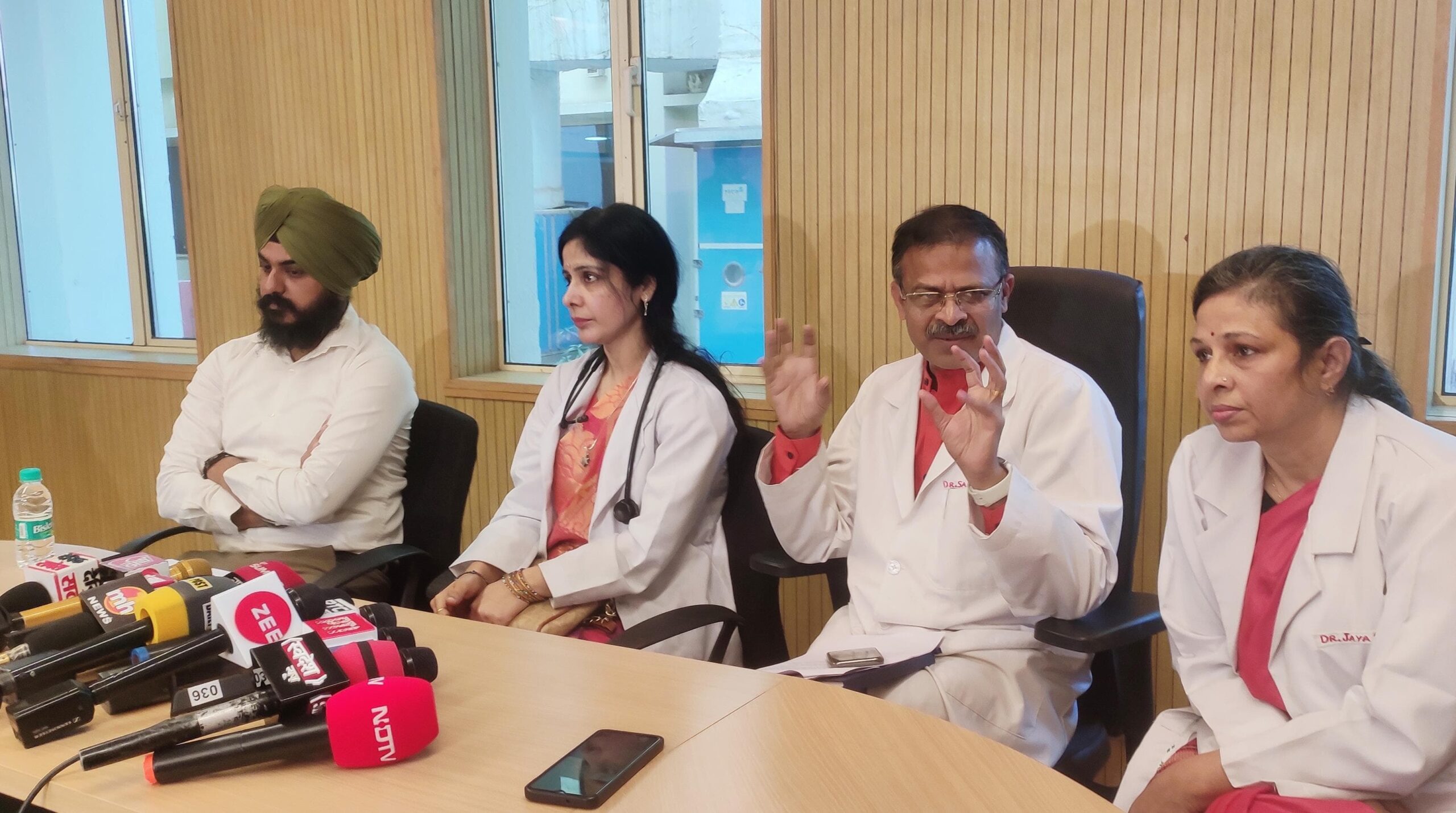
For the first time in the World, PGIMER has been able to develop a new technique- a molecule receptor that would help in precisely diagnosing tumours in the pituitary gland. PGIMER has been patented by the Government of India. This is related to Cortisol which is a hormone in the body that does many important jobs, like controlling metabolism and helping you deal with stress. Sometimes, the body makes too much cortisol, and that can lead to a condition called Cushing’s syndrome.
This can happen for different reasons. One common cause is a small tumour in the pituitary gland called a corticotropinoma, which leads to a specific type of Cushing’s syndrome called Cushing’s disease. But there’s another type called “ectopic Cushing’s syndrome,” which happens because of a problem somewhere else in the body, but not in the pituitary gland.
This molecule receptor is inoculated intravenously in the Patient, This molecule receptor gets attached to the smallest affected and targetted tumour and through PET CT Scan due to isotopes that were attached with Molecule receptor that started shine over the tumour hence the imaging cleared the 360 degree placement of tumour.
Corticotropinomas are small tumours in the pituitary gland, which itself is a tiny part of the brain about the size of a peanut. The tumour is usually very tiny, around 5 millimetres in size. Now, to see something that small in an area as small as the pituitary gland, which is only about 10 millimetres in diameter, is quite challenging.
Imagine trying to find a small speck in a tiny room; it’s not easy. Especially in people who have had previous surgery in that area, the pituitary gland’s shape can change, making it even harder to see this tumour on MRI scans, which give detailed pictures of the brain.
Here’s where it gets complicated: Sometimes, even if one has the type of Cushing’s syndrome caused by something else (ectopic Cushing’s syndrome), one can still have innocent pituitary growths. These innocent growths don’t cause Cushing’s syndrome; they just reside there.
To figure out what’s causing Cushing’s syndrome and where it’s coming from, we need to localize the tumour i.e. which side in the pituitary and the functional (showing how the body works). We often use MRI to look for these small tumours or corticotropinomas in the pituitary gland. But here’s the catch: MRI pictures may not always show exactly what’s causing Cushing’s syndrome or where it’s coming from because they don’t tell the whole story.
Another special test called “Inferior petrosal sinus sampling” (IPSS) is used to get some clues about where the growth might be. During IPSS, they put a tiny tube into a vein in a patient’s groin and guided it to some veins near the brain (inferior petrosal sinus sampling ). By taking blood samples from these veins, we can tell which side of the pituitary gland is making too much of that hormone ACTH. But here’s the thing, while IPSS can give some clues about which side of the pituitary gland is the issue, it can’t precisely pinpoint the exact spot inside the pituitary where the tumour is. Knowing the exact location of the growth is crucial because surgery to remove it can cure the problem.
It is important to note that IPSS-guided surgeries for this tumour only work about half the time. Plus, IPSS is quite expensive, costing around 50,000-70,000 per patient.
Another test that does this is called PET-CT, and it’s more affordable and noninvasive. By using appropriate molecules for PET-CT, we can get a landscape of what’s happening inside the body and where the problem might be, whether it’s in the pituitary gland or somewhere else. The PET-CT combines anatomical and functional imaging, making it a promising way to improve the accuracy of diagnosing Cushing’s disease and help patients figure out the right treatment for a better outcome.
1. CRH-PET/CT and 2. M-Desmo-PET/CT: the two molecules, CRH and M-Desmo are being innovated and patented in the name of Dr Rama Walia and Dr Jaya Shukla. The PET-CT imaging using these molecules is being done in collaboration with the Department of Endocrinology, Nuclear Medicine, Radiology, and Neurosurgery to visualize corticotropinoma in Cushing syndrome patients. The novelty lies in their ability to precisely visualize and localize corticotropinoma in three dimensions that really help in the surgical removal of the tumour.
By patenting these techniques, the departments and researchers involved have secured the exclusive rights to use and license these molecules. This means that other medical institutions or organizations would need permission or a licensing agreement to use CRH- and M-Desmo-based PET-CT for diagnosing and treating Cushing syndrome.
In summary, the patents for CRH- and M-Desmo acknowledge the unique and innovative nature of these imaging molecules and provide legal protection and exclusive rights to their creators. These patents encourage innovation in the medical field and help ensure that the technology benefits both patients and the organizations involved in its development.















